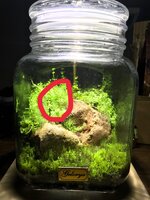Hi,
I hadn't heard of Wabi-Kusa until I registered here - I'm trying to read up on everything at the moment, but I'm impatient to plant something!
Would Wabi-Kusa be a good starting project?
I was planning to get a substrate ball from TGM and start with that, then move onto making my own, purely because I like to know how everything's put together I like to do as much as possible myself.
Also - I see some Wabi-Kusa that are substrate ball based, but also others that look like a flatter substrate layer, so I'm not entirely sure what the term covers, what makes it a Wabi-Kusa rather than an emersed (I hope that's the right term) setup if the substrate is not in a ball shape?
Aaaand finally - I'm researching plants, trying to understand the requirements for everything, assuming for a first project I should go low difficulty, low CO2, low light requirements?
Thanks.
I hadn't heard of Wabi-Kusa until I registered here - I'm trying to read up on everything at the moment, but I'm impatient to plant something!
Would Wabi-Kusa be a good starting project?
I was planning to get a substrate ball from TGM and start with that, then move onto making my own, purely because I like to know how everything's put together I like to do as much as possible myself.
Also - I see some Wabi-Kusa that are substrate ball based, but also others that look like a flatter substrate layer, so I'm not entirely sure what the term covers, what makes it a Wabi-Kusa rather than an emersed (I hope that's the right term) setup if the substrate is not in a ball shape?
Aaaand finally - I'm researching plants, trying to understand the requirements for everything, assuming for a first project I should go low difficulty, low CO2, low light requirements?
Thanks.



